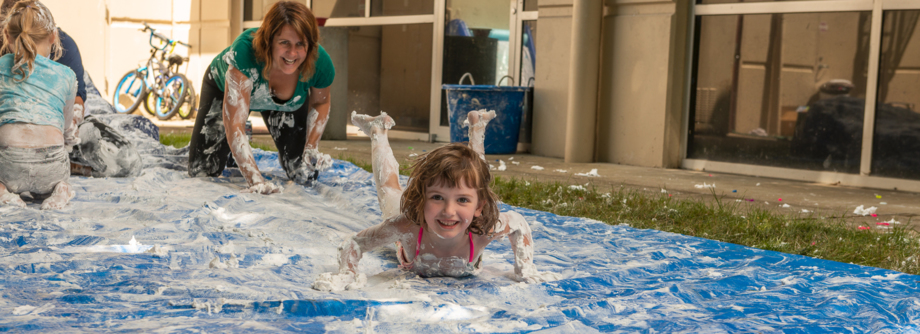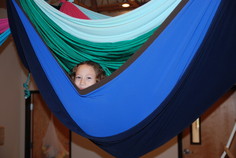Sensory Integration Therapy
Sensory integration is the organization of sensory information for ongoing use. It is the ability to receive and process information from all the senses (touch, movement, smell, taste, vision, and hearing), organize or integrate that information within the brain, and then respond in a meaningful way. Sensory integration provides the necessary foundation for more complex learning and behavior, including motor planning ability, attention, adaptive behavior, and academic learning.
For most of us, effective sensory integration happens automatically, unconsciously, or without effort. For some of us, the process is inefficient, demanding effort and attention with no guarantee of success. This inability to adequately analyze, organize and integrate sensory information is called Sensory Integration Dysfunction.
For most children, sensory integration develops in the course of ordinary childhood activities allowing adequate motor planning, adaptability to sensations, and learning to occur. But for some children, dysfunction happens in the central nervous system making it difficult for the child to respond to sensory information in a meaningful, consistent way. The child may also have difficulty using sensory information to plan and organize what he needs to do. The results of SI Dysfunction for a child may be evident in problems in learning, development, or behavior.
Dr. A. Jean Ayres, Ph.D., an occupational therapist, pioneered the theory of sensory integration to explain the relationship between behavior and neural functioning, especially sensory processing or integration. Her goal in developing this theory was to be able to explain the underlying cause of sensorimotor or learning problems in children in order to best treat them. The work begun by Dr. Ayres continues to be developed and refined through research within the field of occupational therapy as well as in other fields including neuropsychology, neurology, physiology and child development.
Some of the frequent signs of Sensory Integration Dysfunction include:
- Overly sensitive to touch, movement, sights, or sounds
- Under reactive to touch, movement, sights, or sounds
- Easily distracted
- Social and/or emotional problems
- Activity level that is unusually high or unusually low
- Physical clumsiness or apparent carelessness
- Impulsive, lacking in self control
- Difficulty making transitions from one situation to another
- Inability to unwind or calm self
- Poor self concept
- Delays in speech, language, or motor skills
- Delays in Academic achievement
Sensory Integration Dysfunction is suspected when the child exhibits one or more of these common symptoms with frequency, intensity, and duration. If a child is suspected of having a sensory integrative dysfunction, an evaluation can be conducted by a qualified occupational therapist using both standardized testing and clinical observations of responses to sensory stimulation, posture, balance, coordination and eye movements. After carefully analyzing test results and other assessment data along with information from other professionals and parents, the therapist will make recommendations regarding appropriate treatment.
Treatment follows the child’s lead using activities that challenge his or her ability to respond appropriately to sensory input by making a successful, organized response. When the child actively engages in meaningful activities that provide the intensity, duration, and quality of sensation his or her central nervous system craves, integration occurs, adaptive behaviors improve, and learning improves. Treatment helps the child build a strong foundation for the demands of more complex learning and skill. Treatment also helps the child develop skills to interact successfully in social situations and develop a strong sense of self-esteem.
The most important step in promoting sensory integration in children is to recognize that it exists and that it plays an important role in the development of a child. By learning more about sensory integration, parents, educators and caregivers can provide an enriched environment that will foster health, growth and maturation.
The following references are provided for those seeking more information:
Ayres, A. Jean, Ph.D. Sensory Integration and the Child. Los Angeles: Western Psychological Services, 1994
Kranowitz, Carol Stock, M.A. The Out-of-Sync Child: Recognizing and Coping with Sensory Integrative Dysfunction. New York: Skylight Press Book, 1998.
Trott, Maryann Colby et al. SenseAbilities: Understanding Sensory Integration. Tucson, AR: Therapy Skill Builders, 1993.
Or Contact:
Advanced Pediatric Therapies, Inc. Advanced Pediatric Therapies, Inc.
4444 SW Multnomah Blvd. 11320 NE 49th St., Suite 208
Portland, OR
97219
Vancouver, WA 98682
Phone:
503-245-563
Phone: 360-882-8972



